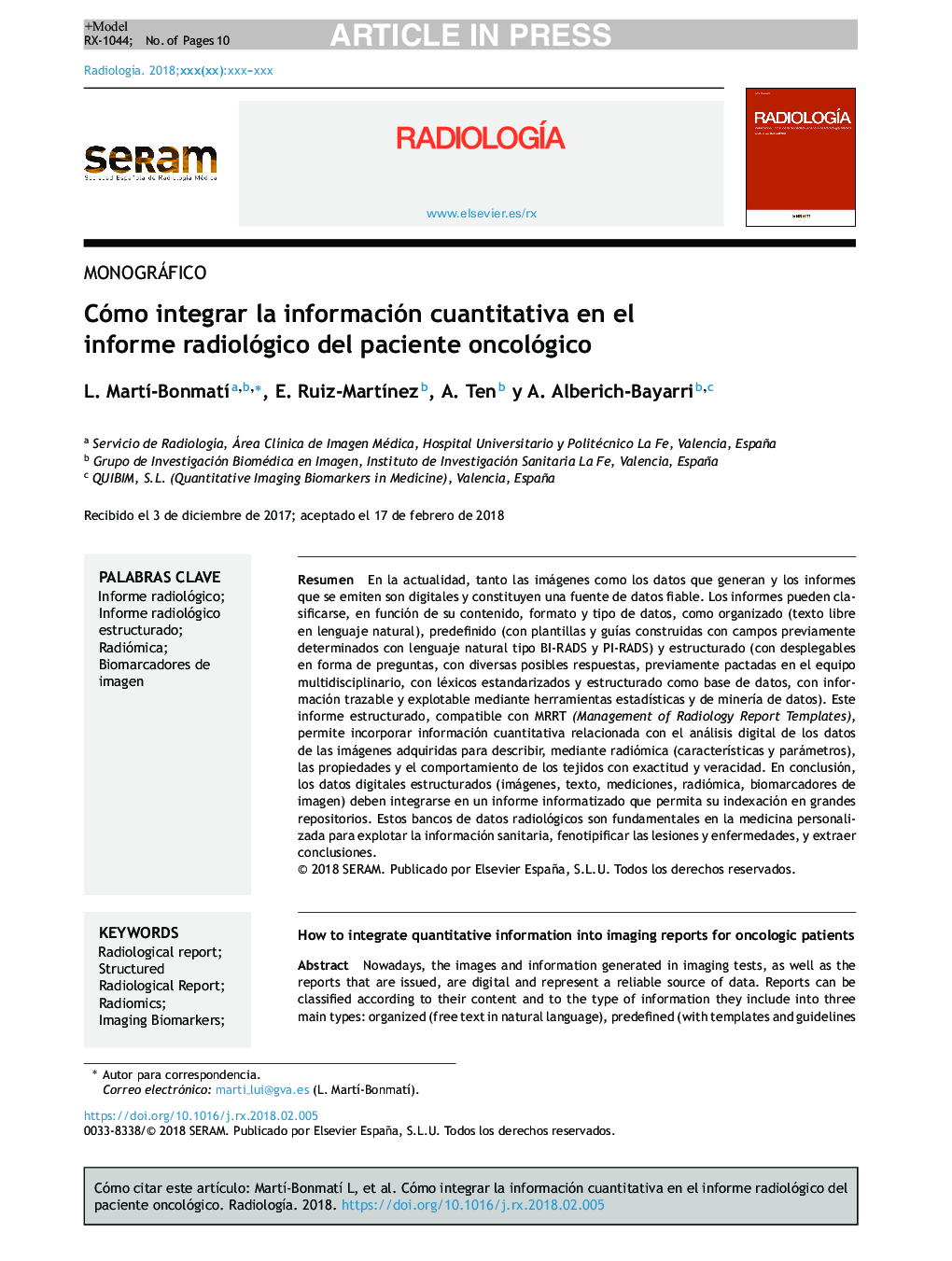| Article ID | Journal | Published Year | Pages | File Type |
|---|---|---|---|---|
| 8824741 | Radiología | 2018 | 10 Pages |
Abstract
Nowadays, the images and information generated in imaging tests, as well as the reports that are issued, are digital and represent a reliable source of data. Reports can be classified according to their content and to the type of information they include into three main types: organized (free text in natural language), predefined (with templates and guidelines elaborated with previously determined natural language like that used in BI-RADS and PI-RADS), or structured (with drop-down menus displaying questions with various possible answers that have been agreed on with the rest of the multidisciplinary team, which use standardized lexicons and are structured in the form of a database with data that can be traced and exploited with statistical tools and data mining). The structured report, compatible with Management of Radiology Report Templates (MRRT), makes it possible to incorporate quantitative information related with the digital analysis of the data from the acquired images to accurately and precisely describe the properties and behavior of tissues by means of radiomics (characteristics and parameters). In conclusion, structured digital information (images, text, measurements, radiomic features, and imaging biomarkers) should be integrated into computerized reports so that they can be indexed in large repositories. Radiologic databanks are fundamental for exploiting health information, phenotyping lesions and diseases, and extracting conclusions in personalized medicine.
Keywords
Related Topics
Health Sciences
Medicine and Dentistry
Radiology and Imaging
Authors
L. MartÃ-BonmatÃ, E. Ruiz-MartÃnez, A. Ten, A. Alberich-Bayarri,
